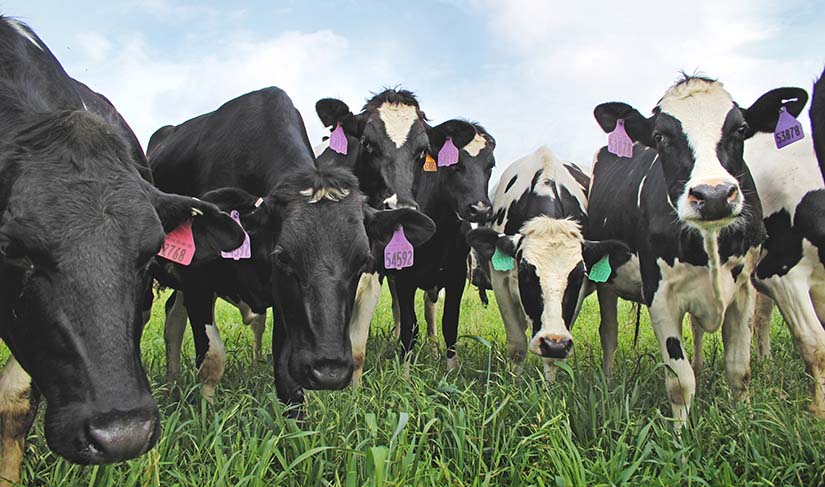Profitable, Clean, and Efficient Farming Starts With Renewable Energy Sources, Sustainably Produced Biofuels
The Joint Institute for Strategic Energy Analysis Studied Sustainable Energy Generation and Consumption in Colorado Farms

This story originally published on JISEA.org.
Energy is essential to agriculture, from fuel needed to operate machinery to the electricity necessary to heat or cool livestock and greenhouses. Most of this energy is currently met with fossil fuels. As demands on natural resources increase, new solutions are needed to sustain our food production while improving how it is powered.
Two studies recently released by the Joint Institute for Strategic Energy Analysis (JISEA) show how farms and agricultural production facilities can make their energy generation and consumption more sustainable.
“JISEA is researching ways to reduce the cost of energy in food systems, reduce emissions, assess new energy sources for agriculture, and increase food resilience,” said JISEA Director Jill Engel-Cox.
JISEA produced two case studies of opportunities for sustainable, reliable, and economical heat and power generation in Colorado farms. This work—supported by the Colorado Department of Agriculture and Colorado Energy Office—will help advance profitable, clean, and efficient farming operations in Colorado.
Anaerobic Digestion Offers Many Benefits for Colorado Dairies
In 2019, livestock manure management totaled about 9.5% of U.S. methane emissions, with beef and dairy cattle emitting more methane than any other domestic animal.
Anaerobic digestion, the process in which bacteria break down organic matter when there is not oxygen, can produce biogas, improve air and water quality, and reduce greenhouse gas emissions, helping Colorado reach the targets set forth in its Greenhouse Gas Pollution Reduction Roadmap.
JISEA analysts Darlene Steward, Elizabeth Weber, and Laura Supple conducted a case study of implementing an anaerobic digestor system at Aurora Organic Dairy High Plains Farm in Gill, Colorado. The 6,000-acre complex has 13,000 cows, 80% of which are producing milk at any given time.
JISEA modeled an anaerobic digestor system at the farm with combined heat and power that operates on biogas. As modeled, the system could produce heat and power equivalent to the hot water needs of 3,400 households and electricity needs of 1,800 households.
“Biogas fuel and digestate products from anaerobic digestion could meet the farm’s energy needs and offer a new revenue stream,” said Darlene Steward, lead author of the JISEA case study.
The anaerobic digestor system could produce enough energy to meet all the farm’s electricity demands and export 1–2 megawatts back to the grid. In addition, if the system uses renewable natural gas, 12,000 metric tons of CO2 emissions from gasoline and 5,700 metric tons from manure management could be avoided.
Solar Energy a Promising Solution for Colorado Greenhouses
Agricultural greenhouses offer protection from weather disasters, farmland degradation, population growth, and water scarcity. However, they have high energy demands compared to traditional open-air agricultural systems.
Greenhouses require carefully optimized environments with precise water and nutrient cycles. Regulating temperature, lighting, humidity, and ambient carbon dioxide concentrations and operating mechanical equipment consume the most energy. If the right conditions are not met, crops fail.
JISEA analysts Gail Mosey and Laura Supple studied the potential for solar energy to provide heat, electricity, and backup power at four Colorado greenhouses: Altman Specialty Plants, Gunnison Gardens, Welby Gardens, and Zapata Seeds.
Colorado greenhouses span a wide range of cultivation techniques, existing on-site energy resources, structural designs, and climate control strategies—resulting in numerous different energy needs and agricultural challenges.
“We found there is no one-size-fits-all energy solution for greenhouses because they’re such unique systems,” said Gail Mosey, lead author of the JISEA case study. “However, an appropriate combination of technical and nontechnical solutions can sustainably address the greatest energy-consuming areas.”
Different combinations of solar power and solar thermal technologies could reduce operating costs, improve farm competitiveness, and improve the sustainability and resilience of agricultural yields. For example, grid-connected solar photovoltaics systems could meet the greenhouses’ energy demand and feed power back into the grid, reducing the need for additional backup generators or batteries.
“There is no single answer to making farms more sustainable,” said Sam Anderson, energy specialist and program administrator at the Colorado Department of Agriculture. “But the case studies outline some promising approaches to improve efficiency and profitability, and help farmers thrive, which is so important to our American lives.”
Read the full case studies to learn more about how Colorado dairies could use anaerobic digestion and Colorado greenhouses could use solar energy to achieve energy independence while improving profitability and reducing emissions.
Note: The Joint Institute for Strategic Energy Analysis retired in February 2025.
Last Updated May 28, 2025
